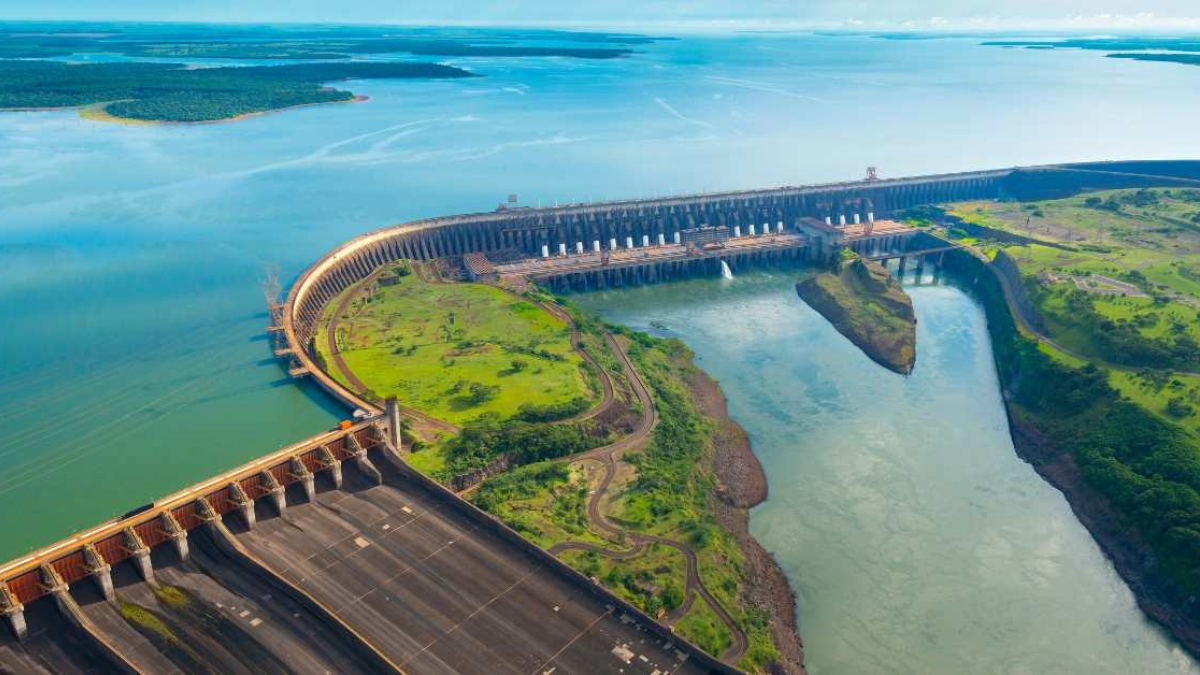Maharashtra, a state known for its diverse landscapes, is home to some remarkable engineering feats, and among them stands the colossal structure of Jayakwadi Dam– the largest dam in the state. This architectural marvel not only plays a crucial role in water resource management but also stands as a testament to human ingenuity.
Dams of Maharashtra
Maharashtra has a long history of dam construction, with over 100 dams mainly located in the Western Ghats. The state’s largest dam, Jayakwadi Dam in Satara, supplies water to Mumbai and Pune. The second largest is Mulshi Dam in Pune, also providing water to the city. The third largest, Bhama Askhed Dam in Raigad, serves Mumbai. These dams play crucial roles in irrigation, flood control, water supply, hydroelectric power, and recreation, showcasing Maharashtra’s dedication to water resource management since the British era.
How Many Dams are there in Maharashtra?
The multitude of dams in Maharashtra holds a crucial position in the state’s advancement, addressing both water supply and power generation requirements. Maharashtra boasts a substantial tally of approximately 1821 dams, encompassing completed structures and ongoing construction projects. Among these, 1004 dams, spanning various sizes, are currently in the process of construction, reflecting the state’s commitment to enhancing water resources and energy capabilities.
Biggest Dam in Maharashtra 2025
The Jayakwadi Dam, built on the Godavari River in Maharashtra’s Sambhajinagar district, is the biggest dam in the state. It was mainly constructed to provide irrigation water to the drought-hit Marathwada region, helping farmers improve their crop production. Along with farming, the dam also supplies water for drinking and industries in nearby towns, villages, and districts like Sambhajinagar and Jalna.
Adding to its importance, the dam area is home to a beautiful garden and a bird sanctuary, making it not only vital for water needs but also a place of natural beauty and biodiversity.
Key Facts Related to the Biggest Dam in Maharashtra
Here are some of the key facts related to Jayakwadi Dam, the biggest dam in Maharashtra:
- Location: Jayakwadi Dam, situated in Paithan taluka of Sambhajinagar district, Maharashtra, India, spans the Godavari River.
- Multipurpose Project: Built for irrigation, it caters to drought-prone Marathwada’s agricultural needs, providing water for drinking, industry, and municipalities in Sambhajinagar and Jalna districts.
- Historical Significance: Originally planned during Hyderabad’s rule, shifted 100 km upstream at Paithan after Maharashtra’s formation. Inaugurated on February 24, 1976, by Prime Minister Indira Gandhi.
- Dam Specifications: Among Asia’s longest earthen dams, Jayakwadi stands 41.30 meters high and stretches over 10 kilometers, boasting a total storage capacity of 2,909 million cubic meters.
- Overflow Records: Having overflowed 18 times, it recorded the highest discharge of 250,000 ft3/s on August 10, 2006.
- Reservoir Name: The dam creates Nath Sagar Jalashay, fed by Godavari and Pravara rivers, forming a reservoir over 55 km long and 27 km wide.
- Siltation Challenges: Approximately 30% of the dam filled with silt, impacting its storage capacity and reducing its life.
- Multipurpose Allocation: 80% of the dam’s water allocated for irrigation, 5-7% for drinking, and the remainder for industrial purposes.
- Irrigation Impact: Through its canal system, Jayakwadi irrigates 237,452 hectares across Aurangabad, Jalna, Beed, Ahmednagar, and Parbhani districts.
- Hydroelectric Power: Features a 12 MW hydroelectric power plant on the right bank, contributing to electricity generation.
- Industrial Supply: Supplies 0.05 MCM water daily to industries in Aurangabad and Jalna MIDC areas, serving as a primary water source for Parli Thermal Power Station.
- Flora and Fauna: The dam’s surroundings host diverse aquatic vegetation and seasonal farming, supporting a rich biodiversity of around 37 flora species.
- Recreational Spaces: Nathsagar Lake’s banks host Dnyaneshwar Udyan, a 125-hectare garden, and Jayakwadi Bird Sanctuary, providing habitats for various bird species, with over 200 birds recorded.
- Conservation Challenges: High water levels in the dam have led to habitat loss for birds in the sanctuary, raising concerns among environmentalists.
Top-10 Biggest Dams in Maharashtra By 2025
Jayakwadi Dam, located in Aurangabad district of Maharashtra, is the biggest dam of Maharashtra with the storge capacity of 2,171 million cubic meters, followed by Koyna Dam, Wilson Dam, and Radhanagari Dam
Here is the list of top-10 largest dams in Maharashtra by 2025:
| LARGEST DAMS IN MAHARASHTRA 2025 | |||
| Rank | Dam | Location | Storage capacity (in million cubic meters) |
| 1. | Jayakwadi Dam | Godavari River, Aurangabad district | 2,171 |
| 2. | Koyna Dam | Satara district | 2,000 |
| 3. | Wilson Dam | Ahmednagar district | 563 |
| 4. | Radhanagari Dam | Bhogawati River, Kolhapur district | 278 |
| 5. | Mula Dam | Mula River, Pune district | 208 |
| 6. | Dhom Dam | Krishna River, Satara district | 87 |
| 7. | Bhatsa Dam | Bhatsa River, Thane district | 61 |
| 8. | Girna Dam | Girna River, Nashik district | 47 |
| 9. | Vaitarna Dam | Vaitarna River, Palghar district | 27 |
| 10. | Pavana Dam | Pavana River, Pune district | 14 |
Maharashtra’s Largest Dam – Jayakwadi Dam
- Location: Godavari River, Aurangabad district
- Storage Capacity: 2,171 million cubic meters
Jayakwadi Dam, nestled in Aurangabad district on the Godavari River, stands as Maharashtra’s largest dam, boasting a massive storage capacity of 2,171 million cubic meters. Serving crucial roles in irrigation and water supply, this landmark structure plays a pivotal role in the state’s development.
Second Largest Dam of Maharashtra – Koyna Dam
- Location: Satara district
- Storage Capacity: 2,000 million cubic meters
Koyna Dam, situated majestically in the Western Ghats of Maharashtra, secures its position as the state’s second-largest dam. This gravity dam, spanning the Koyna River, not only stands as one of India’s largest but also draws numerous tourists, serving dual purposes of irrigation and hydroelectric power generation for the region.
Third Biggest Dam of Maharashtra – Wilson Dam
- Location: Ahmednagar district
- Storage Capacity: 563 million cubic meters
Wilson Dam, renowned as Bhandardara Dam, claims the distinction of being Maharashtra’s third-largest dam. Nestled in Ahmednagar district, this dam boasts a substantial storage capacity of 563 million cubic meters, contributing significantly to water resource management in the region.




 Which Fish is known as the King of India...
Which Fish is known as the King of India...
 What was the Old Name of China? Know the...
What was the Old Name of China? Know the...
 What is the Capital of Senegal? Know Abo...
What is the Capital of Senegal? Know Abo...







